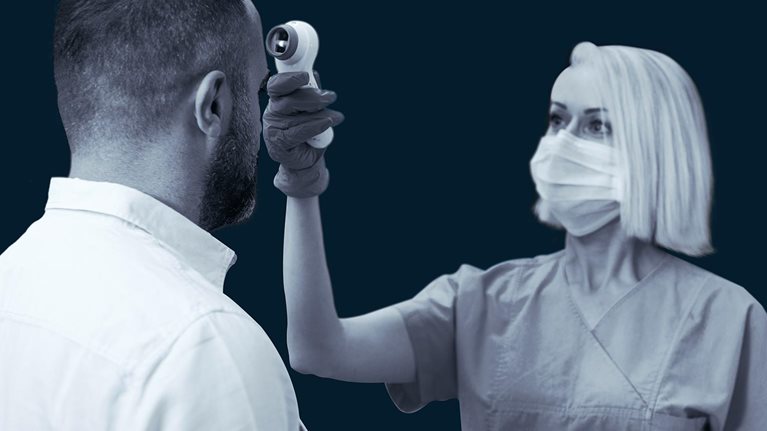Chances are, you’ve been hearing a lot about health equity. In the months and years ahead, you’ll probably hear more: beyond the obvious benefits to patients, health equity is an enormous opportunity for almost every pharmaceutical and life sciences company. Social factors can significantly affect the epidemiology of disease, often in ways that are not readily apparent. Companies can identify these social determinants across different markets, map how they affect different groups, identify which health conditions are undertreated or underfunded, and pinpoint when intervention is most effective.
The findings of a rigorous health equity analysis—the groups that bear a disparate burden, the health conditions treated inadequately, and the opportunities to invest more effectively—will vary from region to region. But the framework for a health equity analysis is the same, and can therefore be repeated across regions. The value proposition from approaching health equity in a robust way is compelling globally, particularly in large, advanced economies.
There is also a values proposition: the benefits to patients and the holistic impact on society. Many studies find that higher levels of trust in doctors and treatments are associated with better health outcomes. Significant research that does not disaggregate outcomes among levels of economic advantage nonetheless supports the assertion that the relationship between trust and health outcomes applies to all groups.1 Greater trust among disadvantaged communities can therefore be expected to contribute to better health outcomes for their members and to drive, in turn, a virtuous cycle—from higher-quality data to more expansive problem solving to better-targeted approaches, and to greater collaboration throughout the healthcare ecosystem (Exhibit 1). A cycle of trust is particularly important to achieve better and more rapid diagnoses, which can be the greatest “unlock” in the epidemiology of care.

In this article, we’ll present a framework for pharmaceutical and life sciences companies to approach health equity, to recognize its limits, and to sharpen their investment decisions. We’ll also suggest steps a variety of players can take across communities to make the impact even greater.
Definitions and opportunities
The first step is to define key terms and to keep those definitions constant across different markets. As a general principle, disadvantaged groups vary from region to region—for example, Black people in the United States and people of Turkish descent in Germany have health outcomes different from those of each country’s majority.2 We should also expect diseases to spread differently in different social contexts; the progression of health conditions can be intricately complex, and health inequities can manifest themselves as limited access, unmet needs, or underserved communities (Exhibit 2). Unclear terms can make precise analysis even harder. Health equity is not the same as health disparity or disease burden, and the differences are not academic.

Keeping terms constant
Although different institutions may define the term in subtly different ways (see sidebar, “Defining health equity”), health equity means, as a foundational matter, that everyone in a given country or region has the opportunity to be as healthy as possible, regardless of social determinants. Health disparities are differences in health outcomes among groups in a given region: for example, there is a disparity in COVID-19 mortality rates—the disease is more likely to be fatal for people older than 70. Health or disease burden is the distribution of a given disease or health condition among different populations within a given area. In the United States, for instance, the disease burden for cystic fibrosis is borne primarily by White people, that for sickle cell disease overwhelmingly by Black people.
It is a fact of the human condition that different diseases spread unevenly among many different populations. Not all differences are matters of fairness, at least insofar as the definition of “fair” is reflected in different social outcomes. Breast cancer, for example disproportionally affects people born as biological women, just as hemophilia, a sex-linked recessive disorder, overwhelmingly affects people born as biological men.
Other burdens are unfair and socially determined, but not treatable by therapeutics. The European conquest of lands previously populated solely by Native Americans, for example, has had a continuing effect over time: Native Americans get a poorer education, live in worse housing, and drink dirtier water than other segments of society. Likewise, the island of Hispaniola (Haiti in the west, the Dominican Republic in the east), with its long and often tragic past, is divided by a border as superficial as a pen stroke but also by differences in culture and history that run far deeper. The average life expectancy for people in Haiti is under 66 years; for people in the Dominican Republic, it is more than six-and-a-half years higher. Such different outcomes—which are unfair by any definition—can be improved and, it’s to be hoped, eventually surmounted. But they can’t be solved (at least primarily) by pills, vaccines, or therapies.
Be focused . . . and curious
Because doctors, hospitals, and drugs are so closely related to health outcomes, people tend to overestimate both their authority and their importance. The provision of healthcare services, including doctors and drugs, typically explains only about 20 percent of the health of populations3 as measured by standards such as quality-adjusted life years (QALYs) and disability-adjusted life years (DALYs). Doctors and drugs are typically not the major determinants of health; factors such as clean water, clean air, and good nutrition are far more important in the aggregate. For pharmaceutical and life sciences players seeking to unlock health equity opportunities, one of the most important simplifiers for investing in health equity is therefore to think about burdens amenable to vaccines, therapeutics, or diagnostics, and to ask frankly about your organization’s expertise, the markets it may be missing, and, what the data say.
Data-driven solutions
It’s easy to be data driven—if there are quality data. But often there aren’t. Indeed, too many managers assume that there is some easily obtainable document or database that displays health burdens, in a precise and sortable way, by disease and population group. Yet why should there be? A consistent, comprehensive initiative to track global disease burdens was launched only in 2010. It’s an initiative to celebrate, to be grateful for, and to support. It’s also a work in progress, and not something that would or could come into being immediately and completely. The first step for a CEO or brand president is therefore to be relentlessly curious about data. Ask your teams what your company really has and how well they really know the burdens of a given disease.
The gaps in what we actually know, as compared with what we’ve arrived at through estimates and best guesses, can be profound. The majority of births and deaths in sub-Saharan Africa, for example, are not officially registered.4 Even in developed regions, including Western Europe and the United States, some populations can be significantly undercounted. These may be the very people most at risk, even if many of them are insured. Since we lack definitive information about how many patients overall are living with stage IV lung cancer in, for instance, Germany, identifying how many of them are of Turkish descent is even more challenging.
What’s more, the geographical rounding up that goes into measuring, on a consolidated basis, a disease or health condition by country or regional market can obscure the large disparities that may exist among the consolidated regions.5 In the United States, focusing on the national average of effective medical interventions for heart valve disease, for example, can frustrate efforts to identify compelling disparities among different regions and different states, counties, and cities—and even different hospitals in the same city. Sometimes, subsets can be on the order of millions of people, an overwhelming majority of whom are already insured and who live in close proximity to doctors or other health providers. Finally, even the way diseases are identified can be a form of guesswork or reflect unconscious or socialized bias. Women, for example, often have heart attack symptoms different from those of men, so women are at higher risk of misdiagnosis.6
Mapping the opportunity
Once teams have taken account of gaps in the data—and have invested to fill those gaps or at least to make more informed estimates—they can map opportunities in a revelatory way. This, in fact, is the stuff of “ah-hah moments.” One such moment comes when companies identify areas, in a market they already serve, where people are not receiving an existing therapy or medicine. Another comes from identifying populations with a health need a company could address, if only it knew that a treatment that it has already developed could be expanded to help those populations.
One useful approach is to think about whose problems a company is looking to solve. Protein supplements, for example, are often designed and developed by (and marketed to) men. Yet women, too, need protein and lose significant muscle mass as they age. Artificial hearts are a miracle of modern medicine—but one developed about ten years ago was too big for women. In large part, such problems exist because companies begin their knowledge journey by thinking that they are trying to solve a specific group’s problems. Even if they succeed, they may miss opportunities to help even more people and to tap new markets.
Of course, it’s natural for companies to focus on segments, to drill into subsegments, and to refine treatments to capture subsegments of those subsegments. But it’s also helpful to step back. Take a five-year audit. Whose problems has the company been solving? Who has it been missing? Data and a wider perspective help a company to better identify unmet needs and to compare the populations that have benefited more from its R&D spending and pipeline development with those that have benefited less.
That approach opens up the possibility of discovering significant white spaces. Is there a condition that does not have an effective intervention or has a set of patients who aren’t being included? Is there a condition that is being underfunded when the impact of investing in a medicine or therapy could be just as high, if not even higher, than the returns achieved from a similar medicine or therapy that the company is already developing or providing?
For example, hepatocellular carcinoma, among the most common cancers in Egypt (a country of more than 100 million people), currently has no adjuvant therapies on the market. Endometriosis, a condition in which tissue similar to the lining of the uterus grows in other parts of a woman’s body, affects about 10 percent of all women of reproductive age around the world but lacks more efficacious, nonhormonal treatments. Sickle cell disease, which disproportionally affects Black Americans, is three times more prevalent than cystic fibrosis, which disproportionally affects White Americans. Yet cystic fibrosis receives about 3.5 times more funding (in federal expenditures) and 75 times more foundation funding than sickle cell disease.7
Why epidemiology of care is the greatest unlock
Once companies have identified a white space—the gap between a need and their allocated resources—they can begin to play a distinctive role. The greatest unlock is addressing unwarranted variations in how patients are treated—the epidemiology of care. With sophisticated digital tools, advanced analytics, and relentless critical thinking, care gaps can now be mapped across the patient journey, taking into account what may be critical differences that affect different social groups.
Capabilities exist not only to consider everything that should happen in patient care and to map what effective treatments look like at each step but also to quantify them, at the level of individual patients and physicians. It is possible, as well, to measure what did not happen: how many patients are not receiving the right treatments, how many are receiving a late diagnosis, the percentage of patients receiving less effective therapies, the percentage who don’t receive follow-up scans, and more. In many cases, it is feasible to map and visualize these opportunities within a given city, or even within specific institutions.
In the United States, sophisticated extrapolations can often supplement ready data to allow for detailed analyses of the race and ethnicity of a patient, and almost always the gender. It’s also possible to extrapolate factors such as wealth and social level of deprivation, based on an area in which a doctor is practicing. This enables teams to develop both a more granular and a more comprehensive understanding of where the wrong outcomes are happening, and to whom. One study, for example, revealed that for a certain type of breast cancer, Black women had a lower likelihood of being prescribed the optimal therapy.8 That’s perhaps not surprising, particularly with overall averages.
Yet studies have also showed that racial differences in treatment and outcomes can vary significantly by geography. In some regions, outcomes are essentially the same for White and Black women, but there is a pronounced disparity in certain counties. Using appropriate real-world data, life sciences companies can measure and track these disparities with considerable geographic specificity, which allows both for more targeted interventions and a deeper understanding of the factors at work. Often, these factors lie at the intersection of multiple variables, such as race, socioeconomic conditions, and historical trends.
As patterns emerge across social groups and geographies, companies can zero in for more effective interventions—sometimes, even before a failure unfolds—to ensure that treatments are provided at (or at least closer to) the diagnosis stage and to avoid the effects of what can happen if they aren’t. In assessments of the epidemiology of care, the greatest opportunities for better health outcomes often come early. Depending upon the disease, getting to the right diagnosis quickly can have outsize effects on health outcomes.
Conversely, failing to make the right diagnosis, or sometimes even delaying it by an incremental period of time, will have cascading effects not only with respect to the initial condition but also from secondary and tertiary consequences that can result from misdiagnoses or delays. For example, the blood cancer multiple myeloma, which is more than twice as likely to strike Black as White Americans, can lead to severe kidney problems and, in turn, to heart failure.9 Doctors and health providers can forestall those consequences if the disease is diagnosed early but must be proactive to make the right diagnosis quickly. The consequences of delay increase in a nonlinear way.
Acting for health equity
Recognizing the importance of health equity and identifying opportunities to promote it are essential first steps but hardly the end of the journey. Players across the pharmaceutical and life sciences value chain can think about partnering both at the industry and community levels and begin to create a virtuous cycle that improves the epidemiology of care.
Industry engagement
Pharmaceutical and life sciences companies are well-positioned to advance health equity and to realize better outcomes for more patients, to reduce health system costs, and to innovate more—and more profitably. Although the social determinants of health (SDOH) are hyperlocal, pharmaceutical products are among the few constants across geographies.
The industry, which is already beginning to act collaboratively, can build on its momentum by taking several steps. For starters, companies can institute uniform industry standards to identify and track unmet needs—a move that will help calibrate R&D investments against the global disease burden. It will also galvanize the industry and other ecosystem players (such as governments and nongovernmental organizations) to fill gaps, and provide regulatory support for key initiatives. In addition, companies can agree on common metrics to track clinical trials and determine how well they match the underlying epidemiology of disease and develop codes of AI conduct to address the needs of different subpopulations.
In addition, individual companies or groups of companies can share their unique capabilities by partnering in specific regions. Abdul Latif Jameel Health and Butterfly Network, for example, are partnering to bring an advanced ultrasound device to underserved people across the Middle East, North Africa, and India. Best Buy Health, Boston Children’s Hospital, Alphabet, Microsoft, Validi, and others have joined the Health Equity and Access Leadership (HEAL) Coalition to mitigate health disparities through technology.
Empower community pull
Unfairness impedes good health; it’s unrealistic to expect that people will seek out health solutions if they distrust medicines and providers. In the United States, 5 percent of White adults report that they have been treated unfairly while receiving healthcare—compared with 19 percent of Hispanic adults and 20 percent of Black adults. These differences reflect historical inequities. Yet companies can foster trust from underserved groups and create community pull by highlighting inequity forthrightly and considering medicines and healthcare access holistically.
Consider the case of diabetes—a disease twice as likely to kill non-Hispanic Blacks as non-Hispanic Whites. Researchers have found that “satisfied patients work as ‘customer evangelists,’ spreading the good word about appropriate and timely diabetes care modalities in the family and community.”10 US Supreme Court justice Sonia Sotomayor, for example, who is of Puerto Rican descent, lives with Type 1 diabetes. She has been among the most passionate and committed activists for sticking to a treatment regimen. Her voice, together with a chorus of others, helps educate populations, generate community pull, and improve health outcomes.
Health equity is a compelling opportunity—and a challenge that pharmaceutical and life sciences players, both individually and collectively, are uniquely positioned to address. By following a defined approach that relentlessly follows the data and by working together, organizations can not only meet significant unmet needs but also create a cycle of trust in underserved communities for even better outcomes.


